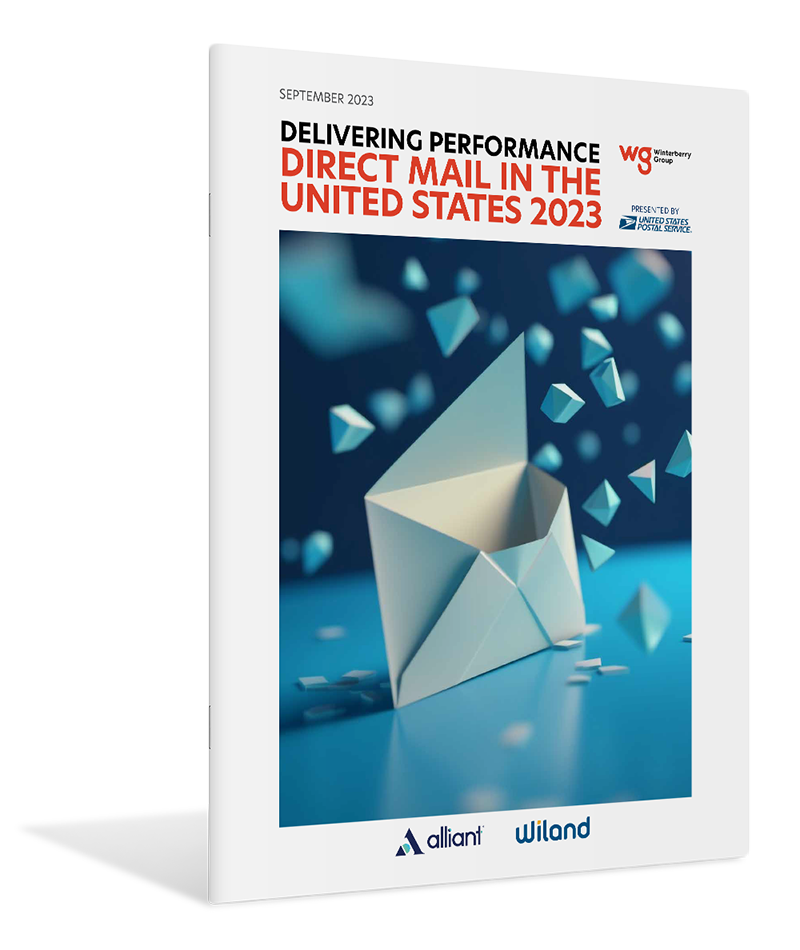Key Takeaways from New Direct Mail Research
Direct mail still has a starring role to play in the modern marketing playbook. In Winterberry Group’s recent research report, marketers will learn why direct mail continues to thrive and where it is headed despite its erroneous “old school” reputation.

The conventional wisdom among many marketers that direct mail is somehow “old school” is flat out wrong. Despite its rather long history, it boasts impressive staying power and effectiveness that defy that stereotype. No other channel delivers direct mail’s response rate and LTV. It remains a consistent driver of revenue for brands and nonprofits alike. Whether it’s because of consumers’ digital fatigue, increasing digital advertising costs, or a number of other factors, many advertisers are rediscovering direct mail’s power as a performance marketing channel.
Because of our longstanding belief in the channel’s effectiveness, we were excited to be a premier sponsor of a new report by Winterberry Group: Delivering Performance: Direct Mail in the United States 2023. This report is based on extensive research with more than 500 marketing and agency executives along with dozens of industry experts. It brings fresh perspective on this nearly $40 billion marketing channel, and I believe it is a must-read for any marketer considering direct mail as part of their media mix.
Along with fellow Wiland colleagues, I was honored to lend some of my thoughts to this report. Here are four key takeaways to highlight from this exciting research:
- No single channel can do it all. Multichannel is here to stay.
Multichannel marketing is not a new concept, but given the sheer number of channels that consumers engage with today, marketers must figure out which channel drives which desired outcome. Each channel has unique advantages. For instance, direct mail is especially useful in driving high-value new customer acquisition. The report’s survey respondents named customer acquisition by far as their top use case for direct mail. For both brands and nonprofits, direct mail, despite rising costs, is still the channel of choice for acquisition and win-back campaigns.
For both brands and nonprofits, direct mail, despite rising costs, is still the channel of choice for acquisition and win-back campaigns.
For both brands and nonprofits, direct mail, despite rising costs, is still the channel of choice for acquisition and win-back campaigns.
- If ROI is the goal, direct mail is the channel.
Direct mail is the original performance marketing channel with its inherent targetability and measurability. It has long held the distinction as the channel that drives the highest ROI and response in targeted prospecting campaigns. In fact, our colleagues at SeQuel Response noted in their own research, The 2023 Direct Mail Marketing Benchmark Report, that 70% of marketers say direct mail performance has actually improved over the last year. This is consistent with Winterberry Group’s findings—and our strong belief here at Wiland—that direct mail remains well positioned as a channel proven to deliver revenue growth. - Digitally native DTC brands have gotten the direct mail message.
Postage isn’t the only thing costing more these days. In some cases, digital media costs are rising and performance is declining. That’s why many digitally native brands are turning to direct mail. The Winterberry Group report’s findings in this area align with what we are seeing with our many DTC clients here at Wiland. The cure for rising costs in any channel—digital or direct mail—is better performance, and the key to better performance is the use of better marketing data. Digitally native direct-to-consumer brands in particular are increasingly incorporating more direct mail campaigns into their media mix and working with trusted data partners to help them do so.
The cure for rising costs in any channel—digital or direct mail—is better performance, and the key to better performance is the use of better marketing data.
The cure for rising costs in any channel—digital or direct mail—is better performance, and the key to better performance is the use of better marketing data.
- Access to quality data sources and new technologies will propel direct mail’s future.
Winterberry Group notes in its report that “the continued robust availability of licensable third-party data—backed by a mature supply chain ecosystem—represents the foundation upon which brands responsibly orchestrate their direct mail programs at scale.” We are seeing this happen here at Wiland, whether our clients rely on us to do the analytics and deliver custom direct mail audiences or whether they use MarketSignals™ data elements to enrich their in-house data analytics. The Winterberry Group report also noted that new technologies, including direct mail retargeting, the USPS’s informed delivery, and the use of on-demand digital printing methods, are making direct mail more nimble, better personalized, and easier to integrate with digital channels.
So what’s the future of direct mail? I believe that it will remain a vital, foundational component of multichannel marketing. The channel will continue its legacy of delivering impressive results for marketers and fundraisers focused on revenue growth.
Curious to dive into the report’s full findings?
You can download your free copy here.
You should also register for our upcoming webinar, when we’ll dive further into the report’s findings!
Tags: advertisers direct mail fundraising research third-party-data





